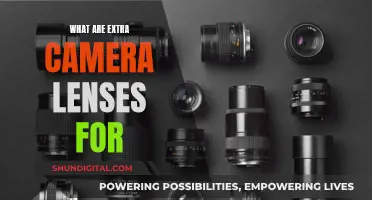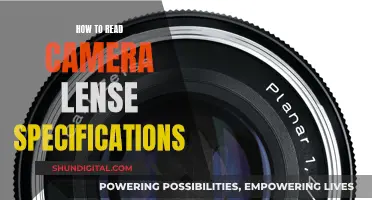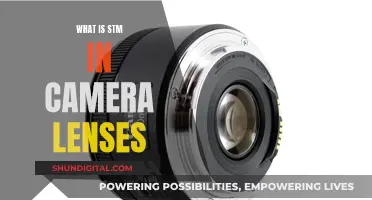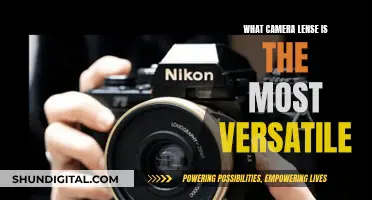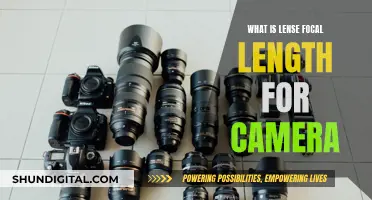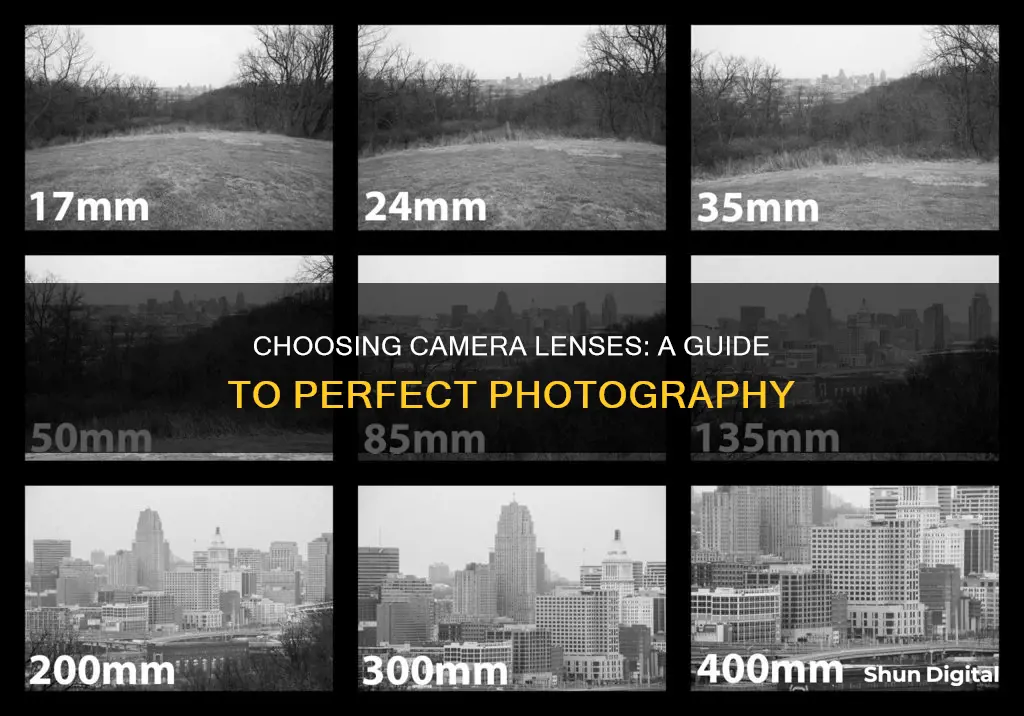
Choosing the right camera lens is an essential part of photography. The right lens can transform an ordinary snapshot into a memory that lasts a lifetime. There are many factors to consider when choosing a camera lens, and it ultimately depends on your needs and requirements.
First, you need to ensure that the lens is compatible with your camera. Different camera brands such as Nikon and Canon have different lens mounts, and while you can use adaptors, it is generally recommended to stay within the same brand. Additionally, you need to consider your camera's sensor size. Lenses are designed for either crop or full-frame cameras, and using a lens designed for a crop sensor on a full-frame camera can damage the internal mechanism.
The next factor to consider is the type of photography you want to do. Different lenses are better suited for different types of photography. For example, wide-angle lenses are great for landscape and architecture photography, while telephoto lenses are better for sports and wildlife photography. If you want to take portraits, a prime lens in the range of 50mm to 100mm is recommended.
Another important consideration is the focal length of the lens. The focal length determines how much of the scene is visible in your viewfinder, with lower numbers indicating a wider shot and higher numbers indicating a longer zoom. For context, wide-angle lenses typically have a focal length of 12mm to 35mm, while telephoto lenses start at 70mm and can go up to 500mm or higher.
Finally, you should think about the aperture of the lens, which controls the amount of light entering the camera and how much of the scene is in focus. Lenses with wider apertures, indicated by lower f-stop numbers, are better for low-light conditions and creating a shallow depth of field.
Other factors to keep in mind include the price, the weight and size of the lens, and whether you want a prime lens with a fixed focal length or a zoom lens with a variable focal length.
What You'll Learn
- Focal length: the distance from the centre of the lens to the sensor when the subject is in focus
- Prime vs. zoom lenses: the former has a fixed focal length, the latter is more versatile
- Aperture: how much light can enter the camera
- Compatibility with your camera's sensor
- Lens speed: the maximum aperture

Focal length: the distance from the centre of the lens to the sensor when the subject is in focus
Focal length is a crucial specification to consider when choosing a camera lens. It is the distance, usually measured in millimetres, from the centre of the lens to the sensor when the subject is in focus. The focal length of a lens determines the magnification of the image and the angle of view.
A longer focal length (lower optical power) results in higher magnification and a narrower angle of view, while a shorter focal length (higher optical power) leads to lower magnification and a wider angle of view. This means that a higher number indicates a longer zoom, allowing you to get closer to the subject, while a lower number gives a wider shot. For example, a telephoto lens with a focal length of 50mm or more is suitable for portrait photography, as it allows you to get closer to the subject and achieve true-to-life proportions of the face and body. On the other hand, a wide-angle lens with a focal length of 14mm to 35mm is ideal for landscape and architecture photography, as it enables you to capture more of the scene in a single frame.
The focal length also affects the distortion of the image. A wide-angle lens can cause distortion, while a telephoto lens provides compression. Additionally, the focal length of a lens influences the depth of field. A wider aperture, denoted by a smaller f-stop number, results in a shallower depth of field, allowing for a stylish look with a blurred background.
It is worth noting that the focal length of a lens may function differently depending on the camera's sensor size. For instance, on a cropped-sensor camera, a 50mm full-frame lens will act like a 75mm or 80mm lens, depending on the brand. Therefore, when choosing a lens, it is essential to consider the camera's sensor size and the equivalent focal length for different camera brands.
Lens Thread Compatibility: A Universal Camera Feature?
You may want to see also

Prime vs. zoom lenses: the former has a fixed focal length, the latter is more versatile
When choosing between prime and zoom lenses, it's important to consider their distinct characteristics and how they can impact your photography. Prime lenses have a fixed focal length, meaning you can't zoom in or out. In contrast, zoom lenses offer variable focal lengths, allowing you to adjust your composition without physically moving.
Prime Lenses:
Prime lenses are ideal if you want to incorporate more brightness into your shots and easily tweak and correct shooting errors. They are also generally more affordable, smaller, lighter, and capable of producing sharper images with larger maximum apertures. This makes them excellent for low-light photography and achieving a shallow depth of field, resulting in beautiful bokeh. Additionally, their simple construction and fewer optical components make them more cost-effective than zoom lenses. However, the fixed focal length of prime lenses means you'll need to bring additional lenses for different shooting ranges.
Zoom Lenses:
On the other hand, zoom lenses provide unparalleled versatility. With a zoom lens, you can capture a wide range of shots, from wide-angle landscapes to telephoto wildlife images, all with a single lens. This makes them perfect for travel and situations where you need to adapt to different scenarios without swapping lenses. While zoom lenses offer convenience, they tend to be bigger and heavier, and they might not deliver the same image sharpness as prime lenses. Additionally, zoom lenses often have narrower maximum apertures, especially when you zoom in, which can be a challenge in low-light conditions.
In summary, the choice between prime and zoom lenses depends on your specific needs and preferences. Prime lenses offer outstanding image quality, brightness, and affordability, while zoom lenses provide the convenience of multiple focal lengths in a single lens.
The Impact of Constant Lens Usage on Camera Performance
You may want to see also

Aperture: how much light can enter the camera
Aperture is the measure of how much light can enter your camera. It is represented by the letter "f" and corresponding numbers, known as an f-stop. The lower the f-stop number, the wider the aperture opening, which allows more light to enter the lens. This is particularly useful in low-light settings, as it allows you to capture images without the need for a flash.
A small aperture number like f/1.2 or f/1.4 means the opening is wider, making these lenses ideal for shooting in low light conditions. Professional photographers often opt for wide-maximum-aperture camera lenses with f/1.4, f/1.8, or f/2 apertures, as they can be used in any lighting environment. However, these lenses tend to be more expensive. Most beginner photographers can achieve good results with f/4 or f/5.6 lenses, which are more affordable and suitable for learning photography.
The aperture also determines the depth of field. When the aperture is at its widest opening or lowest f-stop, the depth of field is shallow, but it increases as the f-stop value increases and the aperture narrows. A wider aperture also allows for a shallower depth of field, creating a stylish look where only a small portion of the scene is in focus while the rest is blurred. This effect is often seen in professional portraits, where the subject is crisp and the background is softly blurred.
The maximum aperture, or the lowest f-stop number, gives you more control over your lens. It allows for faster exposures, enabling you to capture clear images even in low-light conditions or when photographing fast-moving subjects. Additionally, a wider aperture can help you achieve a faster shutter speed, which is useful for freezing action or capturing images without blur.
Lenses Unlocked: Capturing Unique Perspectives and Effects
You may want to see also

Compatibility with your camera's sensor
When choosing a camera lens, it's important to consider compatibility with your camera's sensor. Digital cameras have sensors that record images, and the quality of the image depends on the sensor's size. Sensors in most DSLR and mirrorless cameras are bigger than those in point-and-shoot cameras, resulting in clearer and more realistic images.
There are two types of sensors: CCD (Charged-Couple Device) and CMOS (Complementary Metal Oxide Semiconductor). CMOS sensors are larger and can capture more light, producing higher-quality images. However, the difference in sensor size can affect your camera's structure and function, so ensure the lens you choose is compatible with your camera's specifications and body.
DSLR and mirrorless cameras come in two formats: crop sensor and full frame. A full-frame camera will accurately reflect the focal length listed on your lens. On the other hand, crop-sensor DSLR cameras have a magnification factor, and the lens will function at a longer focal length than listed. For example, a 100mm focal length lens on a Canon crop-sensor camera will perform like a 160mm lens.
Most crop-sensor camera lenses are only compatible with crop-sensor cameras, so ensure the lenses you purchase are compatible with your camera body. Additionally, some lenses designed for APS-C cameras may not be compatible with full-frame sensors, as the projected image may be smaller than required, resulting in a loss of megapixels.
When choosing a lens, consider the sensor size and type to ensure compatibility and optimal image quality.
Anti-Camera Lenses: Worth the Investment?
You may want to see also

Lens speed: the maximum aperture
The aperture of a lens is the measure of how much light can enter your camera. It is represented by the letter 'f' and corresponding numbers, collectively known as an f-stop. A small aperture number like f1.2 means its opening is wider, which allows more light to come into the lens, making it great for shooting in low light.
Professional photographers usually purchase wide-maximum-aperture camera lenses with f/1.4, f/1.8, or f/2 apertures. With these wide apertures, you can shoot in any environment regardless of available light. That’s why these are among the best lenses on the market.
One caveat is that the wider your lens’s maximum aperture, the more expensive your lens will be. Most beginner photographers can get away with f/4, or f/5.6 lenses. These models aren’t quite as fast as more expensive lenses and you can’t achieve the same shallow depth of field with them. But they are much more affordable and are useful for learning photography. For that reason, an f/4 or f/5.6 is often the best first lens to buy.
The maximum aperture of a lens is so important that it’s included in the name of the lens itself. Sometimes, it will be written with a colon rather than a slash, but it means the same thing (like the Nikon 50mm 1:1.4G).
A lens with a larger than average maximum aperture (that is, a smaller minimum f-number) is called a "fast lens" because it can achieve the same exposure as an average lens with a faster shutter speed. Conversely, a smaller maximum aperture (larger minimum f-number) is "slow" because it delivers less light intensity and requires a slower (longer) shutter speed.
A fast lens speed is desirable when taking pictures in dim light, for stability with long telephoto lenses, and for controlling depth of field and bokeh, especially in portrait photography, as well as for sports photography and photojournalism.
In most cases, the wider the maximum aperture, the more expensive the lens will be.
Analog Camera Lenses: Interchangeable or Not?
You may want to see also
Frequently asked questions
The most common types of camera lenses are prime and zoom lenses. Prime lenses have a fixed focal length, while zoom lenses have a variable focal length.
Prime lenses are known for delivering high-quality images and offering much wider apertures compared to zoom lenses. They are also smaller in size, have fewer moving parts, and are often cheaper. Zoom lenses, on the other hand, offer convenience and flexibility by providing a range of focal lengths in a single lens. However, they tend to be more expensive and may not deliver the same image quality as prime lenses.
The choice between a prime and a zoom lens depends on your specific needs. If you require versatility and the ability to capture different types of shots without changing lenses, a zoom lens is ideal. If you prioritize image quality, wider apertures, and a more compact and affordable option, a prime lens may be a better choice.
In addition to deciding between a prime and a zoom lens, you should consider the focal length, aperture, image stabilization, autofocus capabilities, and compatibility with your camera. It's also important to think about the type of photography you will be doing, your budget, and whether you want to buy a new or used lens.


